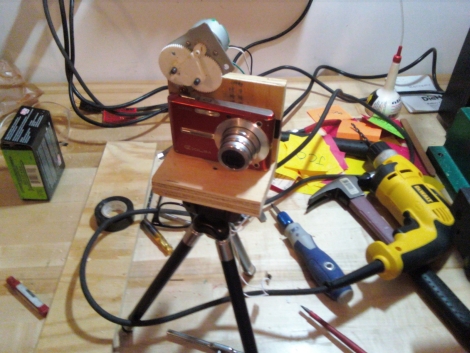
If you walked into an art gallery and saw nothing but blank canvases lining the wall, you might be compelled to demand your money back, or assume that you had discovered the world’s laziest artist. If this gallery happened to be displaying work by [Brad Blucher and Kyle Clements] however, you would be mistaken.
These two artists have collaborated to create a series of works titled, “Take a Picture“. Each picture they have built is constructed to look like an empty canvas when viewed with the naked eye. If you were to take a picture of the canvas with your cell phone or digital camera however, a whole new world would open up in front of your eyes. Their artwork is constructed using infrared LEDs, which cannot be seen with the naked eye, but are visible to nearly any CMOS or CCD sensor on the market. The images range from simple smiley faces and objects to abstract geometric shapes.
It’s a very simple, yet novel approach, and we happen to think it’s pretty cool. The artists have not said what they have planned for this project in the future, but we’d love to see it expanded using larger LED arrays to display higher-resolution images, or even short movies.
Keep reading to see how they went about creating these works of art as well as a promo video demonstrating the effect.
Continue reading “LED Artwork Disappears Right Before Your Eyes”
















